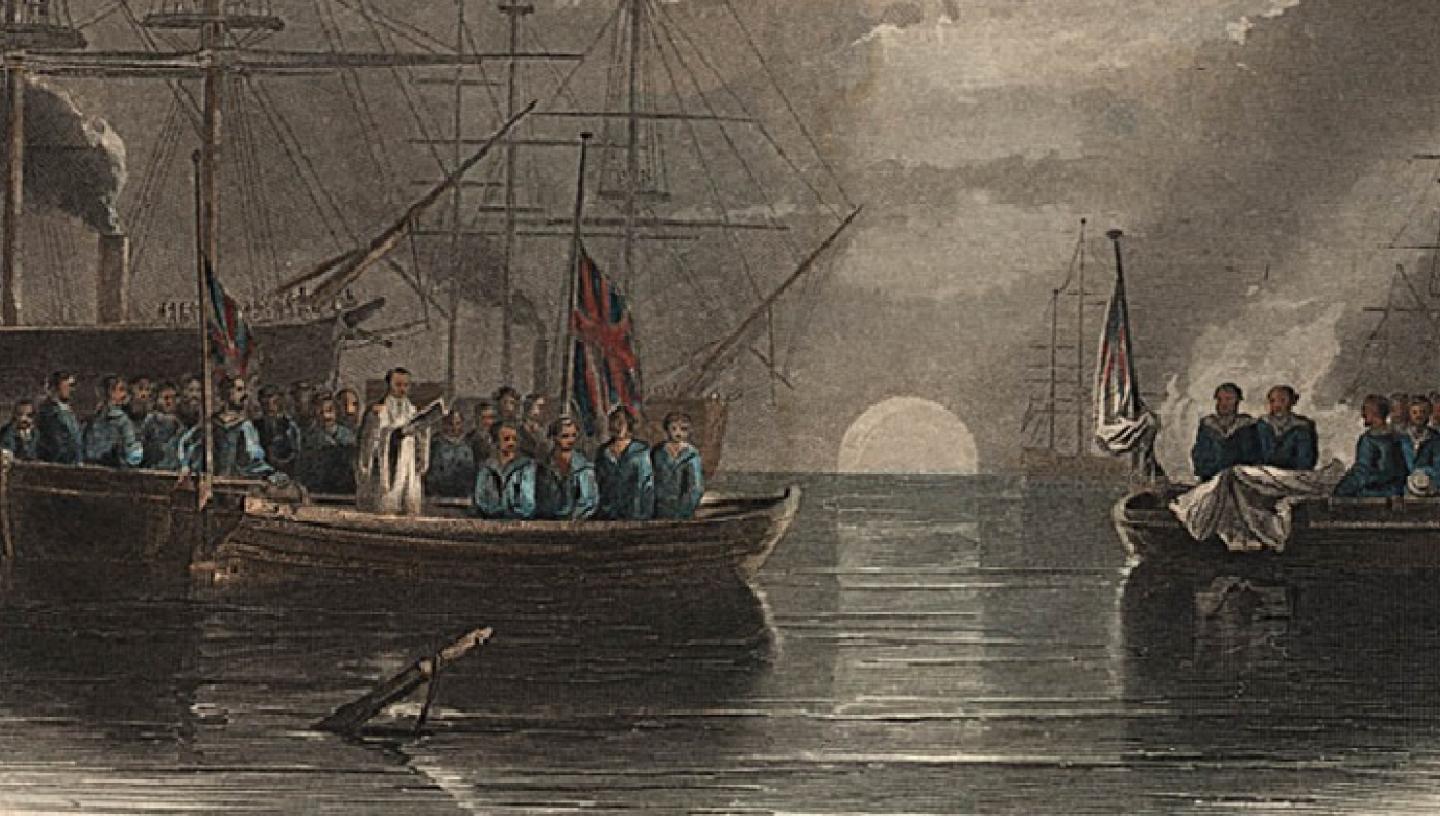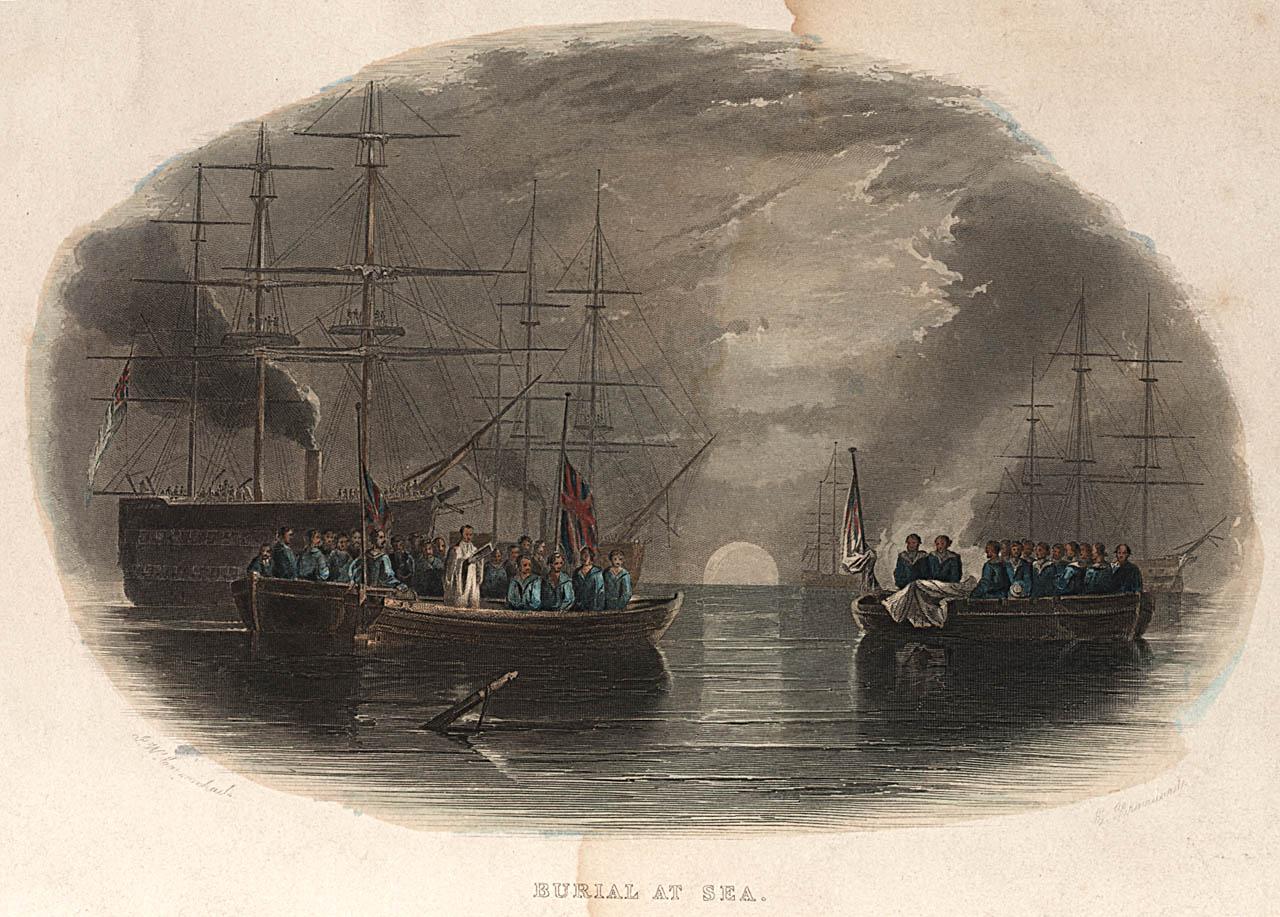
26 May 2017
What exactly happened in the past when someone died during a voyage and was buried at sea?
On merchant vessels, bodies were wrapped in a weighted shroud put together by the sailmaker, before being committed to the deep. According to Robin Haines’s book Life and death in the age of sail (Caird Library ID: PBF7770), with reference to voyages to Australia in the first half of the 19th century, the ship’s ‘captain, crew, passengers and officials’ gathered, a service was read and the body was ‘slipped over the side’ of the ship.
Death, of course, is indiscriminate, and according to Haines, ‘Many diarists describe the weeping of the captain and crew during the burial of children.’ Sometimes a distraught captain would pass ‘the prayer book to another officer to officiate.’ In rough seas, rather than have the assembled company gather on deck, ‘bodies were committed to the ocean through the surgeon superintendent’s porthole after he had read the burial service.’
Sadly, there is also evidence of less respectful practices for burial at sea. Terry Coleman, in his book Passage to America (Caird Library ID: PBE9435), quotes a farmer, Delaney Finch (who crossed the Atlantic to Canada in 1853), giving evidence before the Select Committee on Emigrant Ships in 1854. Bodies, said Finch, were placed overboard without shrouds, the ship’s master explaining:
‘We are not bound to do it; it is only according to courtesy.’

Royal Navy burials at sea also varied, depending on the rank of the deceased and whether the ship was currently engaged in battle. Officers were interred on land where possible, but for ordinary seamen, the crew would assemble for a service led by the chaplain. The body, sewn into a hammock weighted with two cannon-balls, was slipped into the sea. There was no ceremony if a battle was in progress.
Today, burial at sea off the cost of England, for those choosing it, is regulated. Except in the case of cremation, a licence is required and the coffin must be made to certain specifications.
For more information consult our library catalogues
Visit the Caird Library & Archive
Stawell Heard
Librarian, Acquisitions and Cataloguing